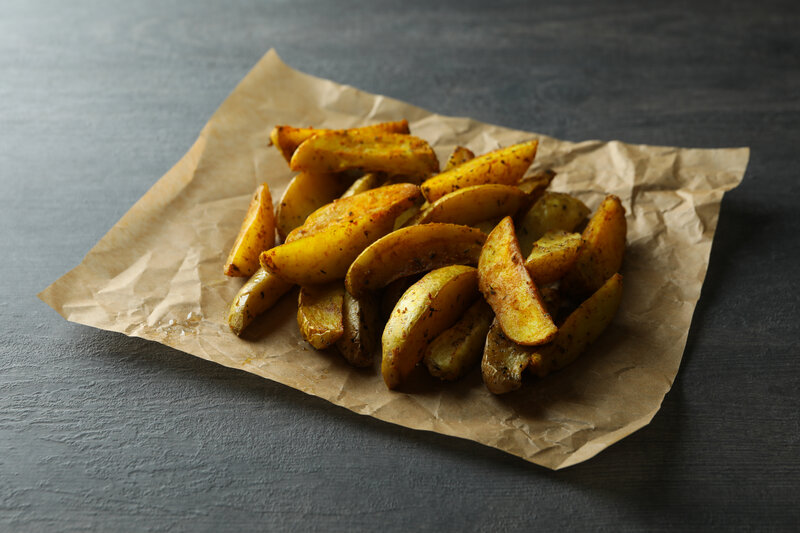The Role of Baking Papers in Gluten-Free and Allergy-Friendly Kitchens: Mitigating Cross-Contamination Risks.

The kitchen, a bustling hub of home life, holds great promise and occasional peril for those with gluten intolerance or food allergies.
A rogue speck of flour or a stray peanut can unleash unwelcome reactions ranging from mild discomfort to life-threatening conditions. This constant vigilance often converts a space of creativity and sustenance into a battlefield. But fear not, for the humble baking paper serves as a powerful ally in this fight, mitigating cross-contamination risks and ensuring safe food preparation.
Let’s set the stage by acknowledging that for many, maintaining a gluten-free or allergy-friendly kitchen is not a fad or dietary choice, but a critical health requirement. For these individuals, even minute exposure to allergens can trigger severe reactions. Enter baking paper – unassuming yet mighty – that builds a shield between food and surfaces, halting the silent advance of potential allergens and contaminants.
Understanding Gluten Intolerance and Food Allergies
Celiac disease, wheat allergy, and non-celiac gluten sensitivity form the triad of gluten-related disorders that necessitate a gluten-free diet. They affect around 1% of the population, but their prevalence seems to be on the rise. Food allergies are another common issue, with eight major allergens (milk, eggs, peanuts, tree nuts, wheat, soy, fish, and shellfish) causing 90% of allergic reactions.
For people with these conditions, the ingestion of allergens, even in microscopic amounts, can elicit reactions ranging from gastrointestinal discomfort to anaphylactic shock. These severe health implications underscore the importance of maintaining a meticulously clean, gluten-free, and allergy-friendly kitchen environment.
Cross-Contamination Risks
Imagine preparing a gluten-free sandwich on a surface dusted with flour, or slicing a dairy-free cake with a knife that just cut a butter-loaded pastry. The risks are real. Cross-contamination can happen when allergenic food comes into contact with non-allergenic food or when shared utensils, appliances, or surfaces harbor remnants of allergenic food particles. This invisible threat is particularly significant for individuals with extreme sensitivity, where even trace amounts can trigger severe reactions.
The Function of Baking Papers
Baking paper, a secret weapon in the culinary world, functions as an effective barrier between food and surfaces. It hinders direct contact with potential allergens and contaminants lurking on shared kitchen surfaces and tools. Baking paper is a sturdy, heat-resistant, non-stick sheet that creates a safe cocoon around food during preparation and baking, thwarting the unwanted mingling of allergenic and non-allergenic ingredients. If you want a quality product in this department you’ll explore Carccu baking papers and see what they bring to the table.
Types of Baking Papers
Baking papers come in several types – parchment paper, wax paper, and silicone baking mats. Parchment paper, known for its heat-resistant properties, is ideal for baking. Wax paper, though not suitable for oven use due to its low melting point, works well for food preparation tasks. Silicone baking mats, the reusable cousins of baking papers, are gaining popularity due to their eco-friendliness and durability.
Benefits of Parchment Paper
Parchment paper offers many advantages, with its non-stick properties and heat resistance topping the list. It prevents food from sticking to baking trays, preserving the integrity of your baked goods while making cleanup a breeze. Additionally, parchment paper is usually bleached and coated with silicone, making it highly resistant to heat, an essential quality for oven-based cooking.
Wax Paper and Allergen Separation
Though not fit for oven use, wax paper comes into its own during food preparation. It creates an effective barrier between allergenic and non-allergenic foods, reducing the risk of cross-contamination. Wrapping foods individually in wax paper or using it as a surface liner during meal prep can go a long way towards maintaining a safe kitchen environment.
Silicone Baking Mats for Safe Baking
Silicone baking mats are a boon to the eco-conscious baker. These durable, reusable mats combine the non-stick qualities of parchment paper with easy cleaning and long-term sustainability. Their high heat resistance makes them ideal for oven use, and their easy-to-clean nature makes them a practical choice for busy kitchens.
Avoiding Shared Utensils and Surfaces
Baking papers, while invaluable, are part of a broader strategy to prevent cross-contamination. It’s also important to maintain separate utensils and surfaces for gluten-free and allergen-free cooking. Marking dedicated tools and surfaces, and maintaining rigorous cleaning standards, are other critical steps in this journey towards a safer kitchen.
Tips for Safe Baking
Use baking papers effectively by discarding them after a single use and storing them properly. Also, be mindful of potential cross-contamination during disposal. For instance, don’t trash a peanut-laced parchment paper in a bin that will hold gluten-free waste later.
Brands and Quality
Consider investing in high-quality baking papers from reputable brands. Look for certifications that guarantee their products are gluten-free and allergy-friendly. Brands like Reynolds (for parchment and wax paper) and Silpat (for silicone baking mats) are known for their quality and safety standards.
Conclusion
For those navigating the choppy waters of gluten intolerance and food allergies, baking papers provide an oasis of safety. They act as guardians, defending against the invisible onslaught of cross-contamination, and ensuring a safe, worry-free baking experience. So, stock up on these culinary allies, and transform your kitchen into a haven of delicious, allergen-free delights.







